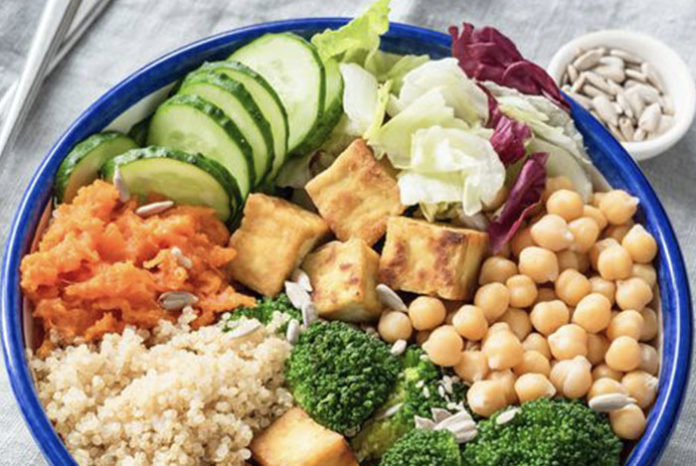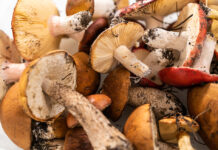
Exploring the Power of Plant-Based Proteins: Healthier Choices for You and the Planet”
In recent years, there’s been a significant shift in dietary preferences towards plant-based proteins. This change is driven by a growing awareness of the various health, environmental, and ethical benefits associated with plant-based diets. Unlike animal proteins, plant-based proteins often come with lower risks of heart disease, obesity, and certain types of cancer, making them a healthier choice for many. Additionally, the production of plant-based proteins generally requires fewer natural resources and results in lower greenhouse gas emissions, making them a more sustainable and eco-friendly option.
But it’s not just about health and sustainability. Many people are turning to plant-based proteins as they seek more diverse and innovative ways to enjoy their meals. From the humble bean to the versatile soy, the world of plant-based proteins is rich and varied, offering a plethora of options for every palate and cuisine.
In this blog, we’ll dive into some of the most popular and nutritious plant-based protein sources. We’ll explore how each one works in the body, their unique health benefits, and any potential drawbacks to consider. Whether you’re a long-time vegan, a curious omnivore, or somewhere in between, understanding these plant powerhouses can help you make informed choices for your health and the planet.
So, let’s embark on this journey of discovery and see what these amazing plant-based proteins have to offer!
1. Almonds: Almonds contain about 21 grams of protein per 100 grams and are a good source of plant protein, healthy fats, and fiber. Soaking them reduces phytic acid, enhancing nutrient absorption. They’re also rich in vitamin E, which is good for skin health. However, they can be high in calories, so portion control is important. They are also a source of vitamin E, which is linked to improved heart health and skin health. A study in the Journal of Nutrition states that almonds can improve cholesterol levels.
2. Beans with Rice: Together, beans and rice provide about 7 grams of protein per 100 grams. This combination forms a complete protein, providing all essential amino acids. It’s a staple in many cultures and is also high in fiber and complex carbohydrates. However, beans can cause digestive issues for some people.
3. Broccoli: Broccoli offers approximately 2.8 grams of protein per 100 grams. It’s also high in vitamins C and K. The National Cancer Institute discusses broccoli’s potential cancer-preventing properties due to its phytonutrients.
4. Chia Seeds: With about 17 grams of protein per 100 grams, chia seeds are also rich in omega-3 fatty acids. The Journal of Food Science and Technology highlights their role in improving cardiovascular health. Chia seeds, while rich in protein, omega-3 fatty acids, and fiber, require careful consumption due to their ability to absorb significant amounts of water. If consumed dry and in large quantities, they can expand in the digestive system, potentially causing blockages or discomfort. This expansion can lead to risks such as choking or esophageal blockage, especially if they are not pre-soaked. Additionally, their high fiber content, when introduced rapidly into a diet, can lead to bloating, gas, and constipation. It’s also important to maintain adequate hydration when consuming chia seeds, as their water-absorbing properties can lead to dehydration. For safe consumption, it is recommended to soak chia seeds in liquid before eating and to gradually increase their intake, allowing the digestive system to adjust.
5. Chickpeas: Chickpeas are a nutritious addition to the diet, offering around 19 grams of protein per 100 grams, alongside being a good source of fiber and iron, and beneficial for maintaining healthy blood sugar levels as noted in the Journal of Nutrition and Food Sciences. However, they should be consumed with consideration; their high fiber content can cause digestive discomfort like bloating and gas for those not accustomed to it, and they contain antinutrients such as phytic acid which can impact mineral absorption, although this is mitigated by proper cooking. Additionally, chickpeas contain lectins, which require thorough cooking to neutralize, and they can be allergenic for some individuals. While they are calorie-dense and relatively high in carbohydrates, their overall health benefits make them a valuable part of a balanced diet, especially when consumed in moderation and prepared correctly.
6. Ezekiel Bread: This bread offers about 8 grams of protein per slice. It’s made from sprouted grains and legumes, enhancing its nutrient profile, as noted in the Journal of Nutrition & Food Sciences.
7. Hemp Hearts: While hemp hearts are an excellent source of protein, offering about 31.6 grams per 100 grams, their high caloric density and fat content pose a risk if not consumed in moderation, especially for individuals managing their calorie intake for weight management. The high fat content, although comprising beneficial omega-3 and omega-6 fatty acids, means that hemp hearts are also calorie-dense. Overconsumption could lead to weight gain. Additionally, their high fiber content might cause gastrointestinal discomfort for those with sensitive digestive systems if introduced rapidly and in large amounts. Therefore, while hemp hearts are a nutritious addition to a diet, they should be consumed in balanced portions to avoid these potential issues.
8. Kale: While kale is a nutritious vegetable offering about 4.3 grams of protein per 100 grams and a rich source of antioxidants, as highlighted in the Journal of Agricultural and Food Chemistry, it also contains compounds called oxalates, which can contribute to the formation of kidney stones in susceptible individuals. Additionally, kale is high in vitamin K, which can interfere with blood-thinning medications like warfarin. Therefore, individuals with kidney issues or those on certain medications should consume kale in moderation and consult with a healthcare provider to ensure it fits safely into their diet. This caution helps to avoid potential health risks while still benefiting from the nutrients kale provides.
9. Lentils: Lentils contain about 9 grams of protein per 100 grams when cooked. This makes them one of the better plant-based sources of protein, offering a significant amount in a relatively small serving. While lentils are a nutritious source of protein, fiber, and folate, they also contain antinutrients like phytates, which can inhibit the absorption of minerals such as iron and calcium. Additionally, their high fiber content, while beneficial for digestion, can cause gastrointestinal discomfort such as bloating and gas in some individuals, especially those not accustomed to a high-fiber diet. It’s important to introduce lentils gradually into the diet and consider soaking or sprouting them to reduce antinutrient levels and enhance digestibility. Lentils are a popular choice in vegetarian and vegan diets for this reason, as well as for their versatility and nutrient density.
10. Mushrooms: Certain mushroom varieties offer around 3.1 grams of protein per 100 grams. A study in the International Journal of Microbiology highlights their protein content and other health benefits.
11. Mycoprotein: Mycoprotein contains about 11 grams of protein per 100 grams. This makes it a good source of protein, especially for those following a vegetarian or vegan diet. It’s comparable to some animal-based proteins in terms of protein content, offering a viable alternative for those looking to diversify their protein sources or reduce their meat consumption. Mycoprotein, a protein-rich food source derived from a naturally occurring fungus, Fusarium venenatum, is known for its high fiber content, low fat levels, and beneficial role in muscle synthesis and satiety, as highlighted in the British Journal of Nutrition. However, it poses certain risks, particularly for individuals with allergies or sensitivities. Since mycoprotein is a product of fungal fermentation, it can cause allergic reactions in some people, similar to other mold-based products. These reactions can range from mild gastrointestinal discomfort to more severe symptoms like hives or, in rare cases, anaphylaxis. Additionally, as mycoprotein is relatively new to the food market, its long-term effects are not as extensively studied as more traditional protein sources.
12. Nutritional Yeast: This yeast provides about 40-50% protein by weight. It’s a complete protein and a source of B vitamins. The Journal of Nutritional Science and Vitaminology highlights its nutritional value. It does pose some risks. Individuals with a sensitivity to yeast products may experience digestive discomfort or allergic reactions. Additionally, the high purine content in nutritional yeast can be problematic for those with gout or kidney issues, as it may exacerbate these conditions. Overconsumption can also lead to an excessive intake of certain nutrients, particularly niacin and folic acid, which in large amounts could potentially cause imbalances or side effects.
13. Oats: Oats offer about 17 grams of protein per 100 grams. They contain beta-glucan, which can help lower cholesterol levels, as per the American Journal of Clinical Nutrition.
14. Peanuts: Peanuts contain about 26 grams of protein per 100 grams. They are also rich in healthy fats and antioxidants, as discussed in the Journal of Food Science and Technology.
15. Potatoes: Potatoes provide about 2 grams of protein per 100 grams. They are also a good source of vitamin C and potassium. The Journal of the American College of Nutrition discusses their nutrient profile.
16. Quinoa: Quinoa has about 4 grams of protein per 100 grams. It’s a complete protein and gluten-free. The Journal of Human Nutrition and Dietetics notes its high nutrient content.
17. Seitan: Seitan, with its impressive 75 grams of protein per 100 grams, stands out as a potent plant-based meat substitute, particularly favored for its meat-like texture and high protein content. However, its primary ingredient, wheat gluten, poses a significant risk for individuals with gluten intolerance or celiac disease, as it can trigger harmful immune responses and digestive issues in these individuals. While seitan is a beneficial protein source for those without gluten sensitivities, offering a low-fat, high-protein option that can support muscle building and satiety, its suitability is limited to those who can tolerate gluten. This dichotomy highlights the importance of personal dietary needs and restrictions in choosing appropriate protein sources, as emphasized by the Journal of the Academy of Nutrition and Dietetics.
18. Soy Milk: Soy milk, a popular dairy alternative, provides about 3.3 grams of protein per 100 grams and is often fortified with calcium and vitamin D. While it offers nutritional benefits, there are concerns to consider: it’s a common allergen, contains phytoestrogens which may have hormonal effects, could interfere with thyroid function at high intakes, and a significant portion is genetically modified (GMO) and may contain pesticides. Additionally, soybeans have phytates that can impact mineral absorption, and some soy milk products may be highly processed with added sugars and preservatives. However, when consumed in moderation and chosen carefully (preferably organic and minimally processed), soy milk can be a healthy part of most diets.
19. Spirulina: Spirulina, with its 57-67% protein content by weight, stands out as a highly potent plant-based protein source, enriched with B vitamins and iron, offering significant health benefits as highlighted in the Journal of Applied Phycology. However, it’s important to approach spirulina with caution due to potential risks. The primary concern lies in its source; if not harvested from a controlled environment, spirulina can be contaminated with harmful bacteria, heavy metals, or microcystins, which can lead to liver damage and other health issues. Therefore, ensuring the purity and quality of spirulina is crucial for safe consumption. Additionally, individuals with phenylketonuria (PKU), a rare genetic disorder, should avoid spirulina due to its phenylalanine content. Despite these concerns, when sourced responsibly, spirulina can be a highly nutritious addition to a diet, especially for those seeking plant-based protein options.
20. Tofu: Tofu contains about 8 grams of protein per 100 grams. It’s a source of iron and calcium. The Journal of Food Science highlights its role as a versatile protein source in various diets.
When consuming plant-based proteins, there are several aspects to be mindful of to ensure a balanced and healthy diet.
Here are some key points to consider:
-
Complete Proteins: Most plant proteins, except for a few like quinoa and soy, are not ‘complete’ proteins, meaning they don’t contain all nine essential amino acids that the body cannot produce on its own. It’s important to eat a variety of plant-based protein sources throughout the day to get all the essential amino acids.
-
Nutrient Absorption: Some plant-based proteins contain antinutrients like phytates and tannins, which can inhibit the absorption of minerals such as iron, calcium, and zinc. Soaking, fermenting, and cooking can reduce the levels of these antinutrients.
-
Protein Quantity: Plant-based proteins generally have less protein per serving compared to animal proteins. Therefore, you might need to consume larger quantities of plant-based foods to meet your protein needs, especially if you’re very active or have higher protein requirements.
-
Digestive Issues: High-fiber content in plant-based protein sources like legumes and whole grains can cause bloating, gas, or discomfort in some individuals. Gradually increasing fiber intake and drinking plenty of water can help mitigate these effects.
-
Allergies and Sensitivities: Some plant proteins, like soy or gluten (found in seitan), can cause allergic reactions or sensitivities in certain individuals. It’s important to be aware of any personal food sensitivities or allergies.
-
Balanced Nutrition: Relying solely on plant-based proteins can lead to deficiencies in certain nutrients that are more readily available in animal products, such as Vitamin B12, iron, calcium, and omega-3 fatty acids. Supplementation or careful dietary planning may be necessary.
-
Processed Plant Proteins: Some plant-based protein products are highly processed and may contain additives, high levels of sodium, or unhealthy fats. It’s important to choose whole or minimally processed protein sources as much as possible.
-
Caloric Density: Some plant-based protein sources, especially nuts and seeds, are very calorie-dense. While they are nutritious, portion control is important if you’re watching your calorie intake.
-
Variety: Eating a wide range of plant-based foods is the best way to ensure you’re getting a variety of nutrients. This not only includes different protein sources but also fruits, vegetables, whole grains, nuts, and seeds.
-
Protein Quality: The quality of protein in plant-based foods can vary. Researching and choosing high-quality sources is important for optimal health benefits.
By paying attention to these aspects, you can enjoy the benefits of plant-based proteins while a step towards a healthier lifestyle and a more sustainable world. Each of these protein sources offers unique benefits and can be a delicious part of your meals. Whether you’re fully plant-based or just looking to incorporate more plant proteins into your diet, there’s a wealth of options to explore. Remember, variety is key to a balanced diet, so feel free to mix and match these protein sources to keep your meals exciting and nutritious.
BONUS:
The Profound Environmental Benefits of Plant-Based Diets:
Adopting a plant-based diet goes beyond personal health, offering profound benefits for our planet’s ecosystems. The environmental advantages of plant-based proteins are manifold, encompassing reduced land use, lower water consumption, and significant decreases in greenhouse gas emissions. For example, producing one kilogram of beef can require up to 15,000 liters of water, whereas crops like lentils and beans need substantially less—often less than 10% of that amount. This stark contrast highlights the efficiency of plant-based agriculture in conserving our water resources.
In terms of land use, livestock farming is one of the leading causes of deforestation, particularly in the Amazon rainforest, where land is cleared for grazing and growing feed crops. In contrast, plant-based crops require less space and can often be grown in a more sustainable manner. For instance, rotating crops like legumes can enrich the soil, reducing the need for chemical fertilizers, and minimizing soil erosion.
Greenhouse gas emissions are another critical factor. The livestock sector is estimated to contribute about 14.5% of global greenhouse gas emissions, according to the Food and Agriculture Organization of the United Nations. Methane, a potent greenhouse gas emitted by ruminant animals like cows and sheep, is significantly reduced in plant-based farming. By choosing plant-based options, we can directly contribute to lowering these emissions.
Moreover, plant-based diets help preserve biodiversity. Animal agriculture often leads to habitat destruction, which threatens wildlife and plant species. Plant-based farming, especially when practiced sustainably, can coexist more harmoniously with local ecosystems, supporting biodiversity.
In summary, shifting towards plant-based proteins is not just a dietary choice but a powerful tool in combating climate change, conserving natural resources, and preserving the planet’s biodiversity. Every meal becomes an opportunity to make a positive impact on our environment.










